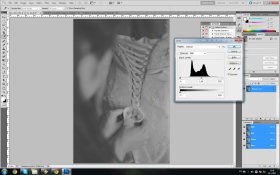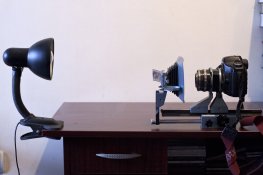BorisM
Member
- Joined
- Jan 24, 2013
- Messages
- 2
So I've been trying to digitalize my negatives and I am doing something (very) wrong. I have a Pentacon duplicator, I've set it up with Canon 5D and a 50mm 2.8 Tessar. I have some seven BW negatives that need to be scanned, Ilford FP4, HP5 @800 and 3200 and Delta 3200 @6400, so all of them are pretty different.
The problem, I think, is that I don't know what a photographed negative is supposed to look like. Histogram is pretty off, images are too low on contrast and when I fix the photo according to histogram, everything goes too dark, blacks go black hole dark. I could go with that if I had only low ISO films, the real problem is with those highly sensitive negatives. I've made contact prints that show more detail and better contrast that this digital stuff, so I know it can do a lot better.
I've attached three stages of work, first one is the look of the negative when photographed, second is view on histogram and third is histogram "fixed" one. I have seen all those manuals on how to scan with DSLR but nowhere have I seen anyone with this particular problem. God knows what will happen when I go on colour negatives!
Has anyone got any idea what am I doing wrong?
The problem, I think, is that I don't know what a photographed negative is supposed to look like. Histogram is pretty off, images are too low on contrast and when I fix the photo according to histogram, everything goes too dark, blacks go black hole dark. I could go with that if I had only low ISO films, the real problem is with those highly sensitive negatives. I've made contact prints that show more detail and better contrast that this digital stuff, so I know it can do a lot better.
I've attached three stages of work, first one is the look of the negative when photographed, second is view on histogram and third is histogram "fixed" one. I have seen all those manuals on how to scan with DSLR but nowhere have I seen anyone with this particular problem. God knows what will happen when I go on colour negatives!
Has anyone got any idea what am I doing wrong?







